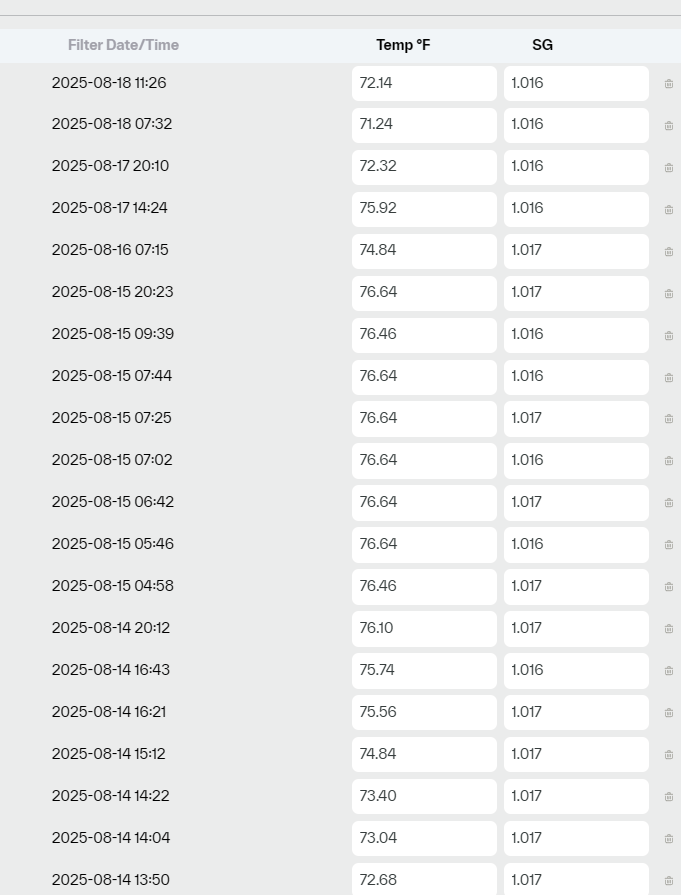Brewed my first every beer, partial LME, grain. Using a G40 system. It is a blonde ale using US West Coast M44 Yeast.
I didn't have a tiltometer in it for Day 1, but on Day 2 it read 1.0528. Because of my ignorance (and just some mistakes), I ended up fermenting 2 days at 65F and then 4 days at 70F, then a 2 days at 75F. Fermenting seemed to stall at 1.016. Yesterday, I bumped the temp down to 72 to try to get it going and nothing has happened. the target OG for the recipe was 1.013 and I am stuck around 1.0158. This would give me a ABV of about 4.89% instead of 5.2%.
Should I let it continue or add more yeast? Or, should I just proceed forward as is (cold crash then keg). I'm more than fine w/ the lower ABV but my worry is will the beer be too sweet. Like most people I suppose, I'm really just hoping for something moderately drinkable since it was my first attempt.
Note: I did a taste taste after day 5 just to experiment and it was sweet although I have absolutely no idea what to expect.
I didn't have a tiltometer in it for Day 1, but on Day 2 it read 1.0528. Because of my ignorance (and just some mistakes), I ended up fermenting 2 days at 65F and then 4 days at 70F, then a 2 days at 75F. Fermenting seemed to stall at 1.016. Yesterday, I bumped the temp down to 72 to try to get it going and nothing has happened. the target OG for the recipe was 1.013 and I am stuck around 1.0158. This would give me a ABV of about 4.89% instead of 5.2%.
Should I let it continue or add more yeast? Or, should I just proceed forward as is (cold crash then keg). I'm more than fine w/ the lower ABV but my worry is will the beer be too sweet. Like most people I suppose, I'm really just hoping for something moderately drinkable since it was my first attempt.
Note: I did a taste taste after day 5 just to experiment and it was sweet although I have absolutely no idea what to expect.
























![Craft A Brew - Safale S-04 Dry Yeast - Fermentis - English Ale Dry Yeast - For English and American Ales and Hard Apple Ciders - Ingredients for Home Brewing - Beer Making Supplies - [1 Pack]](https://m.media-amazon.com/images/I/41fVGNh6JfL._SL500_.jpg)



































